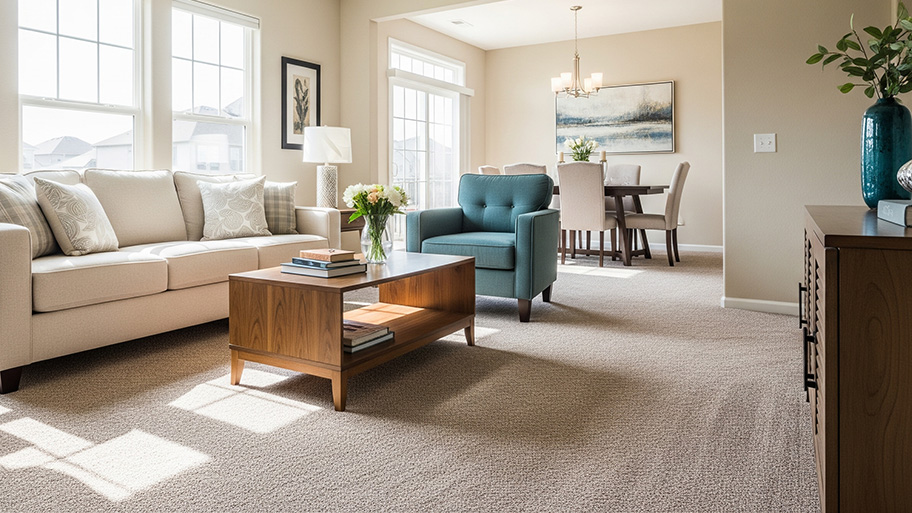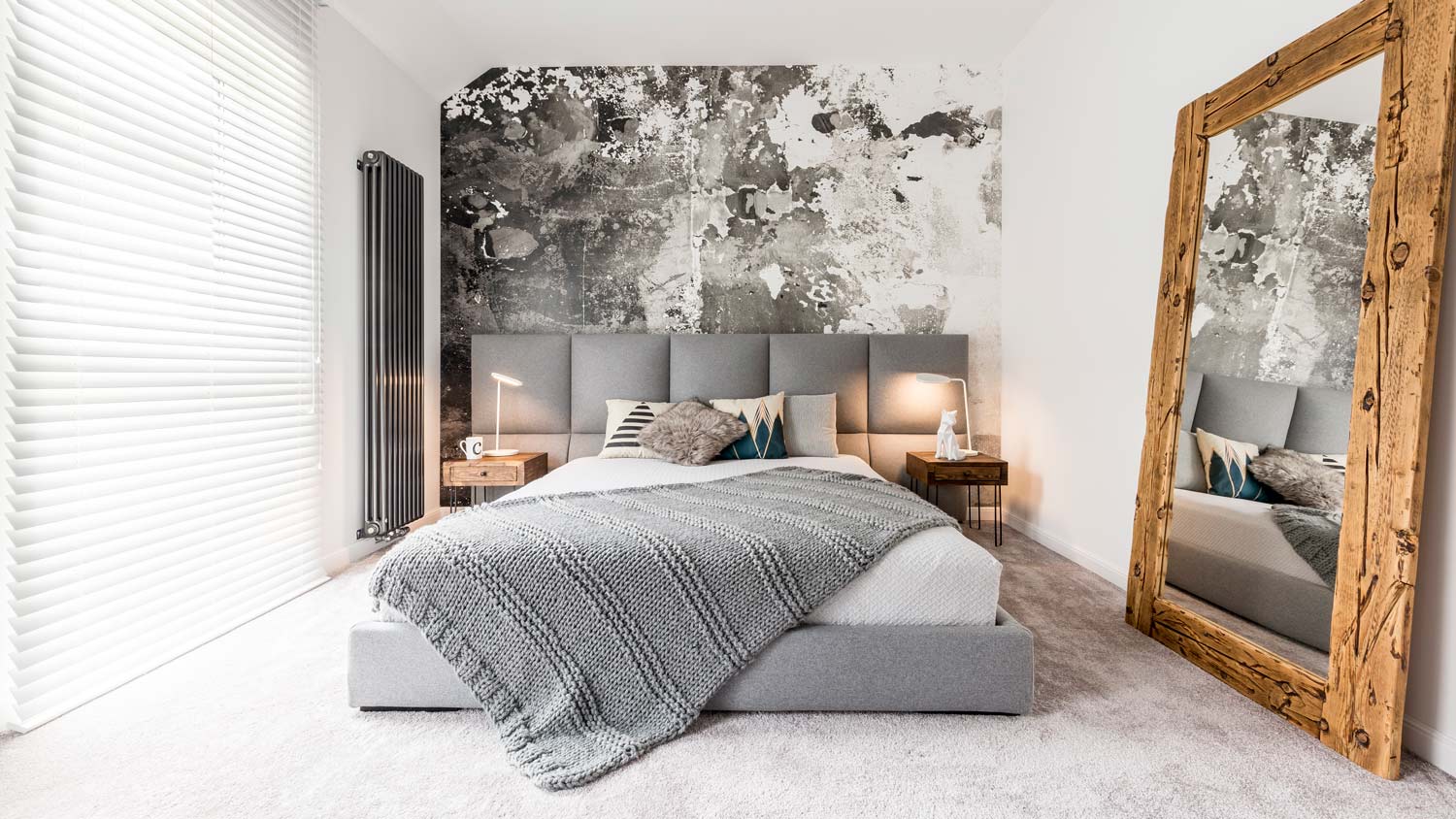
Carpet installation costs vary depending on the type of carpet, difficulty of the installation, and labor costs. We break it all down in this article.
Sometimes all worn carpet needs is a good stretch


Carpet wrinkles can be caused by humidity, poor installation, and moisture.
Fix carpet wrinkles as soon as possible to avoid irreversible damage.
You restretch a carpet to fix wrinkles.
When carpet is newly and professionally installed, it is smooth and cozy—the perfect canvas to lay out and make carpet angels (you know, like snow angels, except inside!). But if you start to notice wrinkles, that may be a sign that your carpet is aging or has been through some serious water damage. Another problem is buckling, when the edges start to curl or air pockets appear in the middle.
Not to worry—just because your carpet is not lying flat anymore does not mean you have to rip it out and start new. A local carpet stretcher can get rid of those wrinkles, pronto. Of course, the easiest (and cheapest) option is to try to prevent wrinkling and buckling entirely. Here is what you should know up front.
A carpet wrinkle is when you have what looks like a wrinkle in your flooring. Instead of a nice, flat surface, you are now dealing with a trip hazard. Besides that, it is not pleasant to look at. It might be a single wrinkle or a series of ripples and waves. The wrinkles are usually fairly large and can span several feet.
If you have these, you should take care of them as soon as you can. This will help to avoid people tripping and falling, and the possibility of permanent damage. If the room gets a lot of foot traffic, the wrinkle could get stepped on a lot, which causes rips and cracks in the carpet. Once damaged, you will have to deal with carpet repairs after restretching.
There are a couple of common reasons why you may be dealing with carpet wrinkles—humidity and poor installation.
Just like humidity does a number on your hair, it can do a number on your carpet. Humidity, particularly in regions with four distinct seasons, is a common reason for carpet wrinkles and buckling.
Controlling the humidity and temperature in your house can help prevent carpet wrinkling. Here are some ways to minimize humidity in your home:
Generally, you want your home’s humidity level to sit between 30% and 50%. If you see moisture on the windows, the humidity level in your house is probably too high. Run a dehumidifier and make sure your windows are properly sealed. You can also open windows to release moisture.
Try not to let your house get above 85 degrees Fahrenheit (29 degrees Celsius) for an extended period.
Steam-cleaning also raises the temperature and can cause carpets to shrink, so consider using another cleaning method if that is a concern.

Make sure your carpet installer uses proper tools when installing the carpet. Professionals should use a pole or power stretcher. This will stretch your carpet from wall to wall. If your installer is only using a knee kicker to install your carpet, it will not be stretched to manufacturers’ specifications.
If a carpet is not stretched correctly during installation, it can loosen and develop ripples and wrinkles. The manufacturing of the carpet itself has changed, and carpets are stiffer now than the ones used in your childhood home. Stiffer carpet requires more powerful installation tools.

Low-quality carpet and padding may save you some money upfront, but in the long run it can cost you. When choosing carpet for your home, make sure the padding you buy is compatible with the carpet itself. Mixing and matching can cause buckling and wrinkling.
If you are purchasing cut-pile carpet (the most common kind because it is softer underfoot compared to looped carpets), select padding that is no thicker than 7/16 of an inch and no less than a six-pound density. Check with the manufacturer for specs on your specific carpet. Selecting improper padding can void the manufacturer’s warranty and lead to wrinkles and ripples.
Not only is wet carpeting subject to wrinkling and buckling, but it can also be a reason why carpet smells bad. Wet carpet, commonly caused when it gets too wet during cleaning, gives mold an environment to thrive. To avoid this, use a local carpet cleaning service. In case of a flood or water leak, the best way to salvage your flooring is with quick action. Here are some guidelines:
Assume the carpet pad needs to be replaced.
If the water is dirty, like from a sewer backup, call in a professional to assess.
Turn off the electricity before wading through a flooded basement.
Rent a water extractor ($100 per day), a carpet blower ($25 per day), and a heavy-duty dehumidifier ($50 per day).
Do not forget to check the walls for water damage.
Moisture also causes delamination, which is when the carpet separates from the backing. Improper cleaning and flooding are common causes, but delamination also occurs due to moisture coming up from below. To avoid delamination, make sure your carpet is laid with a moisture barrier. If the barrier rips or tears during installation, use a new piece. Moisture can get in through little holes.
Experienced DIYers can take steps to smooth carpet wrinkles on their own. One of the most effective methods is carpet stretching, which requires renting a power stretcher or knee kicker to pull the carpet taut.
Steaming is another approach that requires less elbow grease. The heat from a steam cleaner softens carpet fibers, temporarily smoothing out wrinkles. Another quick fix is ironing, which works best on minor, localized wrinkles. To avoid burning your carpet, put a towel down first. As with steaming, the wrinkles will most likely spring back over time.
Lastly, consider rearranging your heavy furniture. Hefty items can pull and put pressure on the carpeting, causing wrinkles or buckling.
Your carpet is wrinkling, and now you are wondering if it is a good time to replace the whole thing. The answer depends on a few factors, but the first thing to consider is how long it has been since installation. Carpet lasts anywhere from five to 15 years, so if it has been longer than that, now might be a good time to get new carpet.
Here are some other signs it is time to replace your carpet:
Stains will not come out
Heavy wear and tear
Carpet has foul odors
Underlayment has worn out
After a house flood or heavy water damage is also a good time to replace your carpet. Wet carpet breeds mold and mildew, which can damage not just your flooring but also your subfloor.
The cost of repairing carpet ranges from $135 to $280, with the average for fixing loose carpet that causes wrinkling being $100 to $300. Your carpet's square footage and labor costs in your area will impact what you pay.
Conversely, carpet replacement costs are considerably higher, ranging from $780 to $2,810. However, replacing old, worn-out carpets with wrinkling may be a wiser investment than repairing them.
While learning how to remove carpet wrinkles is a straightforward DIY task for many handy homeowners, it might not be up your alley. Some common issues you can run into when attempting to DIY the issue include carpet fibers coming undone, stretching the carpet too tightly, and seams coming undone.
To avoid headaches, hire a carpet repair company near you. That way, you will not have to worry about renting equipment and learning how to use new tools, and you know your carpet will be as good as new again.
From average costs to expert advice, get all the answers you need to get your job done.

Carpet installation costs vary depending on the type of carpet, difficulty of the installation, and labor costs. We break it all down in this article.

The cost to carpet stairs depends on the number of stairs, material choice, and staircase type. Read on to calculate your project expenses

The average range to remove carpet costs $120 to $720. Contractors base carpet removal costs on square footage, home location, and installation type.

If you’re looking to cover unsightly stains in your home, dye is an alternative to replacing the carpets entirely. Here’s how to dye carpet from start to finish.

The best carpet for stairs is durable and suited for high-traffic environments. However, they aren’t as soft and can be more expensive. Read on to learn more.

Rugs and carpets play different but important roles as flooring options in your home. Here’s what to think about when comparing these two popular options.